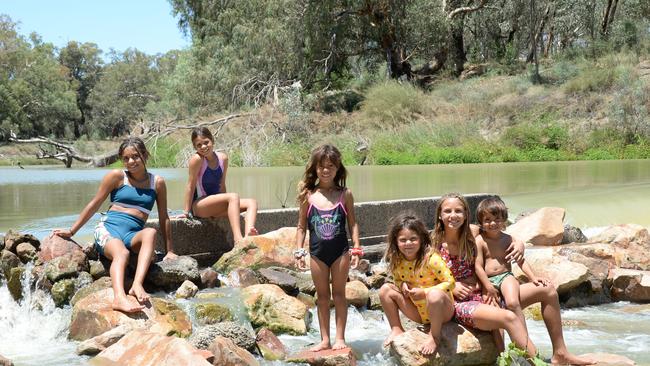‘The river is our life: without it, there’s no us’
The Murray-Darling Basin is a tale of two halves. In the southern part the rivers are flushed but in the north communities are still waiting for drought-breaking rains.

The Murray-Darling Basin has become a tale of two halves. In the southern part of the system, the rivers are flushed and the pastures are green. Communities in the north, however, are still waiting for drought-breaking rains, with the tributaries running low and soil still thirsty.
New figures obtained by The Australian show water catchments in the south are 60 per cent full but only 29 per cent full in the northern basin.
Substantial rainfall across the basin last March lifted the spirits of farmers in both parts, many of whom reported they were able to sow their first crop in three years.
The good rainfall has allowed total water catchment to knock up to 53 per cent capacity, up from 28 per cent the previous year.
Stories of bumper crops were rife across NSW and Victoria, backed up with statistics showing agriculture production forecasts were up 10 times this growing season since last year.
But the Murray-Darling Basin is expansive, stretching well over 2000km and covering hundreds of towns and communities.
Because of its vastness — crossing four states — emergence from the drought has not been a reality for all. In Wilcannia, NSW, rainfall in March meant the Darling River flowed again. A month later, the river had all but dried up.
A new rule first applied in January released a small flow of environmental water designed to flush down the river and encourage connectivity in the basin.
For 12-year-old Amelia Whyman and her 11-year-old sister Kathalka, the environmental water arrived last week and has meant they could go swimming again, go boating and have barbecues with their family by the river.
“Before the flow last year in March, there was no water in the river ... you could just walk straight across,” Amelia said. “Since then, the river has been so low.”
“It’s important to have the water because all of our animals can finally swim again, and now we can go fishing and swimming more often,” Kathalka said.
The children’s father, Owen, described the day the flow arrived as “marvellous”, emphasising that the river system plays an important and integral cultural role in their community.
“This is our life. Without this river, there’s no us, there’s no story,” Mr Whyman said. “The river is very important to us. We get a chance to go fishing, and the kids get to do what kids do.”
But Mr Whyman said the water was not enough, predicting that the riverbed would be dry again in less than a month.
“The water won’t be here for long — by the end of this month, it will all be gone again. It doesn’t stay here for long, so we’ve got to enjoy it while it lasts.”
Federal Water Minister Keith Pitt said it had been frustrating to see such discrepancy in the basin.
“Some decent rains over parts of the basin, particularly the southern section, means some of the best crops in several years for many farmers, but in the north it unfortunately hasn’t yet been as positive,” Mr Pitt said.
“It is frustrating to see farmers in some parts of the basin looking forward to bumper crops while those in other parts are still desperate for rain.”
NSW Irrigators Council chair Claire Miller said some parts of the northern basin were down to 5 per cent of their water allocation, with many communities never coming out of drought.
“In the north, the drought didn’t end.,” she said. “Northern irrigators have still been in drought conditions.”
Ms Miller said it was due to a fundamental difference in the climate in the two parts of the basin.
“Down south, they’ve got tall mountains and more rainfall to begin with,” Ms Miller said. “On top of that, they’ve got large, public storages like the Hume, Dartmouth and Eildon dams.”




To join the conversation, please log in. Don't have an account? Register
Join the conversation, you are commenting as Logout